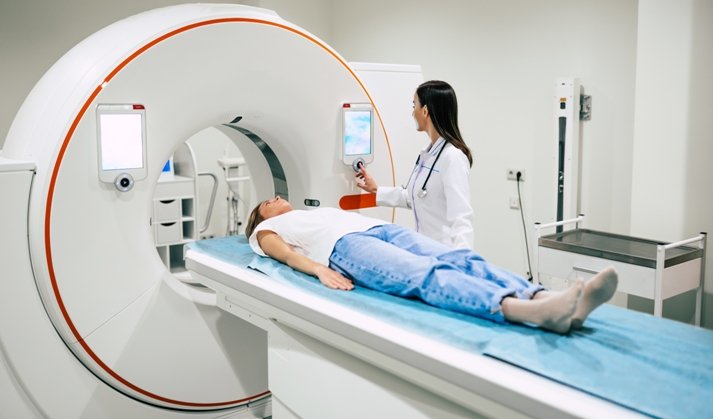CT Scan In Nagpur
An Advanced Spiral CT Scan 96 Slice is an imaging test that uses X-rays and computer processing to create highly detailed cross-sectional images of the body. The “96-slice” technology refers to the scanner’s ability to capture 96 thin slices of the body in a single rotation, allowing for fast, accurate imaging of organs, bones, blood vessels, and soft tissues. It’s called a spiral (or helical) scan because the machine moves in a spiral motion around your body, producing continuous images that can be reconstructed into 3D views.

Types of Advanced Spiral CT Scan 96 Slice
Depending on your condition, your doctor may order different types of CT scans, including:
CT Brain — to assess stroke, tumors, bleeding, or head injury
CT Chest — for lung diseases, infections, or tumors
CT Abdomen and Pelvis — to evaluate abdominal pain, kidney stones, or tumors
CT Angiography — to visualize blood vessels and detect blockages or aneurysms
CT Spine or Bones — to detect fractures, spine problems, or bone tumors
Cardiac CT — to evaluate the heart and coronary arteries
What Are Some Common Uses of the Procedure?
An Advanced Spiral CT Scan 96 Slice is commonly used to:
Detect tumors, infections, or internal injuries
Identify causes of pain or swelling
Guide biopsies or other procedures
Evaluate blood vessel problems (like blockages or aneurysms)
Plan surgeries or monitor treatment outcomes
Assess heart and lung conditions, especially in cardiac patients
How Do I Prepare for My Advanced Spiral CT Scan 96 Slice?
Wear comfortable, loose-fitting clothes; you may need to change into a gown.
Remove metal objects such as jewelry, eyeglasses, or dentures.
If your scan requires contrast dye, you may be asked to fast for a few hours beforehand.
Inform the technologist if you have allergies, kidney problems, or are pregnant.
Bring prior scans or medical reports if requested by your doctor.
What Will Happen During My Advanced Spiral CT Scan 96 Slice?
You will lie comfortably on a motorized table that moves through the CT scanner.
The scanner will rotate around you in a spiral motion while capturing images.
If contrast dye is needed, it may be given by mouth or through an IV.
The procedure is painless and usually takes only 5 to 15 minutes, depending on the area scanned.
You may hear some whirring sounds, but you can communicate with the technologist throughout the scan.
What Are the Reasons for an Advanced Spiral CT Scan 96 Slice?
Your doctor may recommend this scan to:
Investigate unexplained headaches, chest pain, or abdominal pain
Detect tumors, infections, or inflammation
Evaluate injuries after accidents or trauma
Examine blood vessels for narrowing or blockages
Monitor chronic conditions like cancer, heart disease, or lung disease book an appointment at Nobel Imaging and Diagnostic for a medical test
Why Is the Advanced Spiral CT Scan 96 Slice Used?
This advanced CT technology is used because it offers:
Faster scan times, reducing discomfort and motion artifacts
Superior image quality, improving diagnostic accuracy
Reduced radiation dose compared to older CT scanners
Ability to perform detailed 3D reconstructions for surgical planning or treatment monitoringContact Us
